The Travels of Tug 44 |
|
Belted Kingfisher |
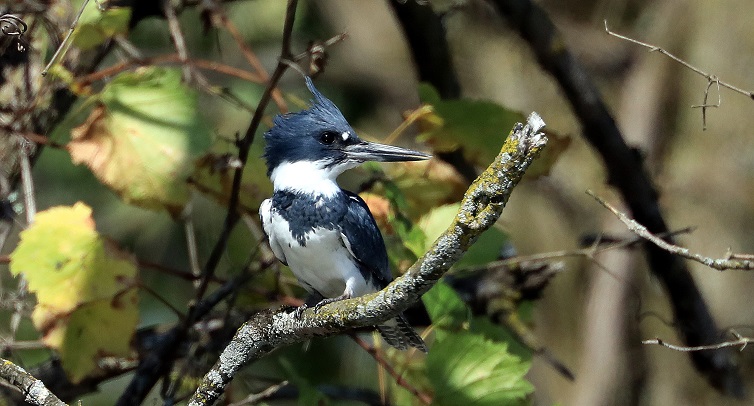 |
|
Belted Kingfishers are small birds, about blue jay sized. They perch on branches overhanging water, watching for small fish, tadpoles and other critters. When they spot one, they fly into the water, head first usually with a big splash, and catch the critter with their beak. This one is a male. high-res
|
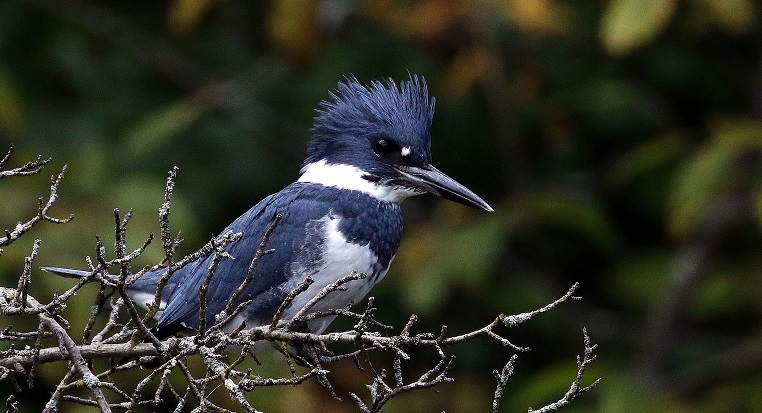 |
|
The single blue belt across the top of his chest indicates this is a male. In some light, the blue belt has some brown in it. They can be easily spotted by listening for the loud rattling call they often make while flying. high-res
|
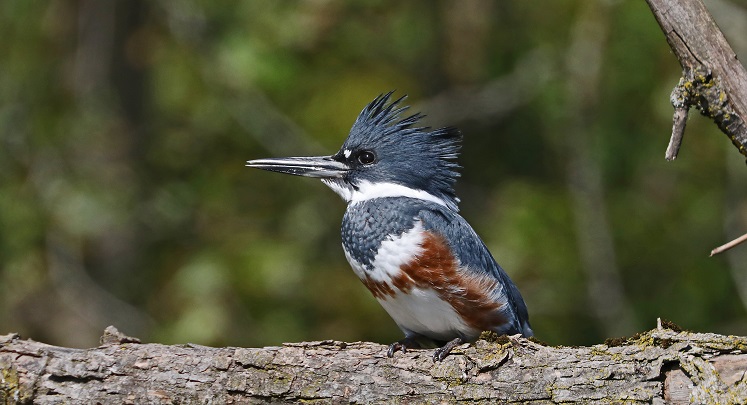 |
|
This Belted Kingfisher is a female, as shown by the 2nd belt on her chest which is reddish-brown. high-res
|
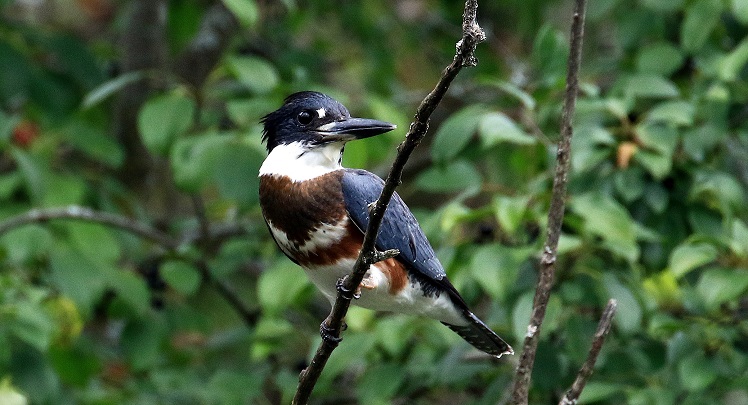 |
|
This female Belted Kingfisher has her crest down, normally they display it up, but occasionally it's down as shown here. Note her 2nd belt which is reddish-brown and the additional reddish-brown on her flanks. Kingfishers are one of the few birds where the female has more decoration than the male. high-res
|
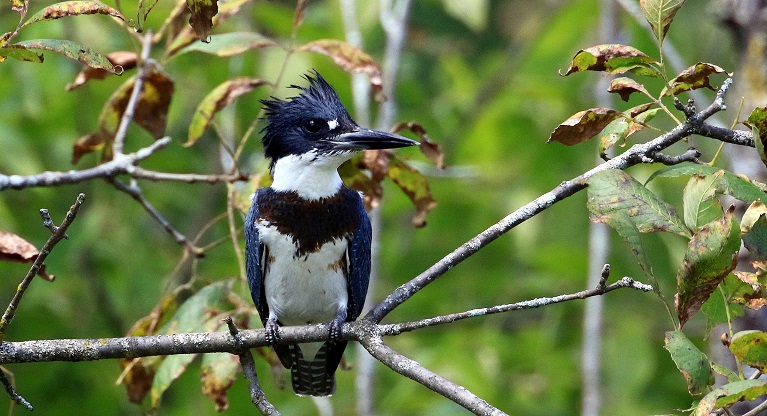 |
|
And this is their teenaged daughter. Immature females show the beginnings of the 2nd brown belt but it doesn't go all the way across the chest, as seen here. high-res
|
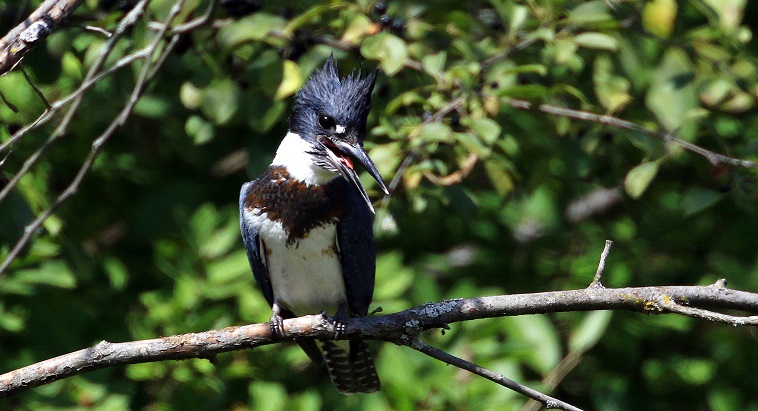 |
|
Another look at the immature female Belted Kingfisher. Nesting is most unusual, they drill a tunnel into the dirt on the riverbank, between 3 and 6 feet long and that's where eggs are laid and the young are reared. They do not use any nesting materials. The female usually incubates at night and the male does the day shift. high-res
|
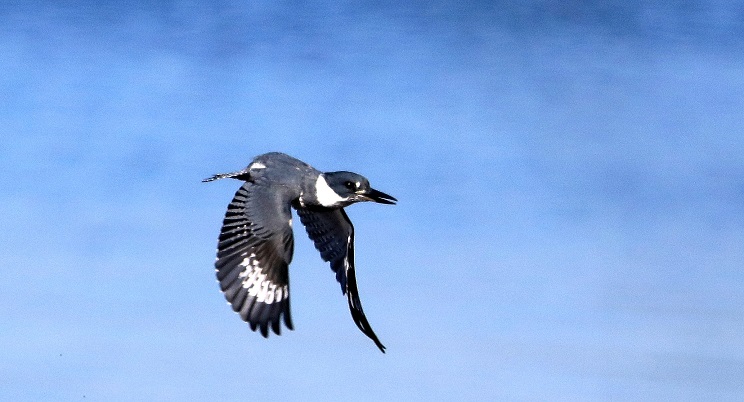 |
|
October 2017: Spotted this male Belted Kingfisher flying along a swampy section of the Hudson River. They often make a fast rattling call as they fly. high-res
|
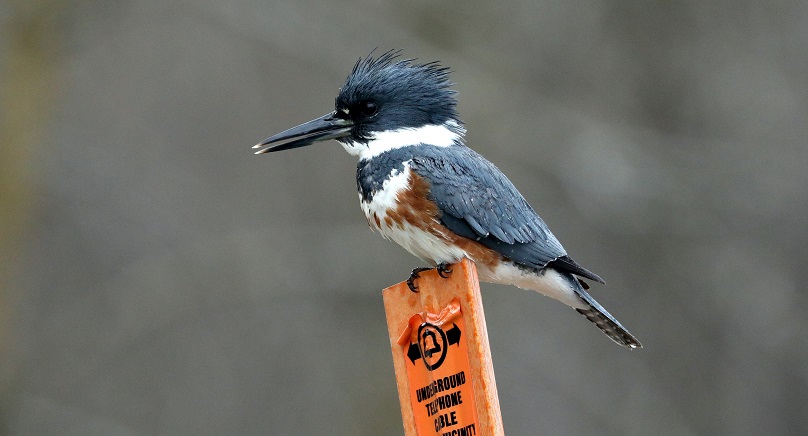 |
|
April 2018 - This little girl seems to be working for the telephone company. Do they hire Belted Kingfishers? high-res
|
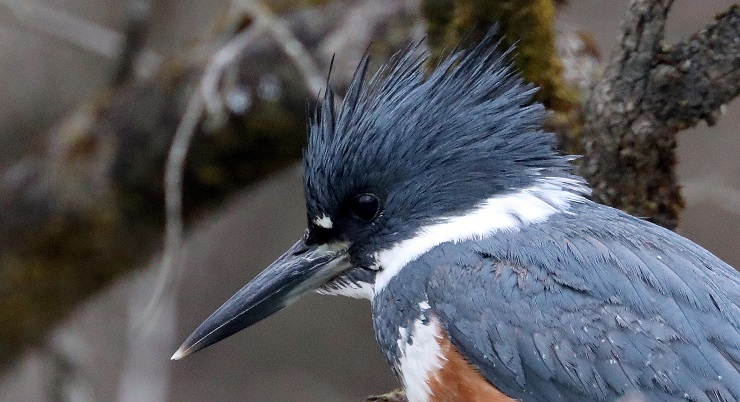 |
|
And then she flew closer and posed for this selfie. Beautiful birdie. high-res
|
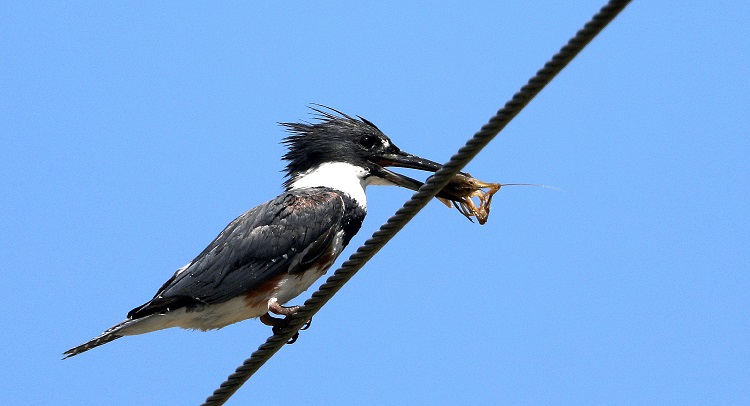 |
|
July 2018 - This female Belted Kingfisher landed right in front of me with a big splash in the swamp and came up with a crayfish. She landed on an overhead wire and started processing the crayfish by breaking off its claws, then she flew with it to a nearby tree. high-res
|
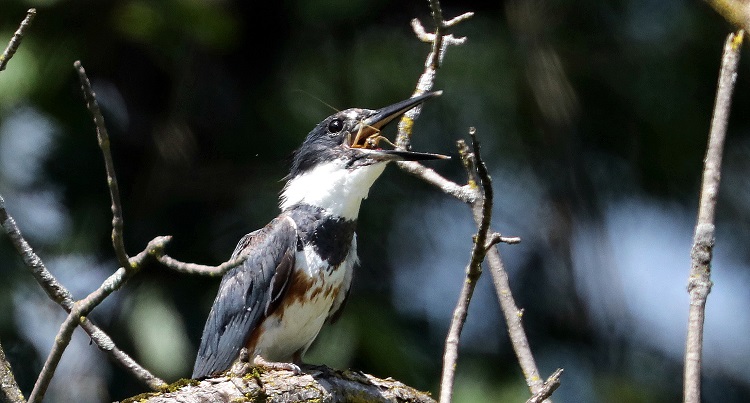 |
|
... and here she is again, swallowing the crayfish whole, shell and all. Notice all we see is the crayfish's eyes and antennae. Normally birds swallow all critters head-first, but crayfish have a sharp point on their nose so they have to go down tail first. high-res
|
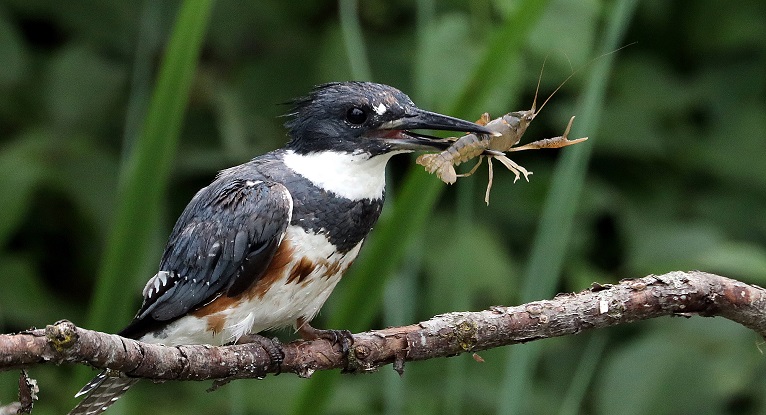 |
|
And here she is again a week later, and again she has a crayfish. This time she held it out for me to admire her great catch! I watched this Kingfisher every day for a week and she was somehow managing to catch 2-3 crayfish per hour each time I was there. The water was brown and muddy and the crayfish are the exact same color as the water, but somehow she spotted them from 20 feet above the water on her perch. high-res
|
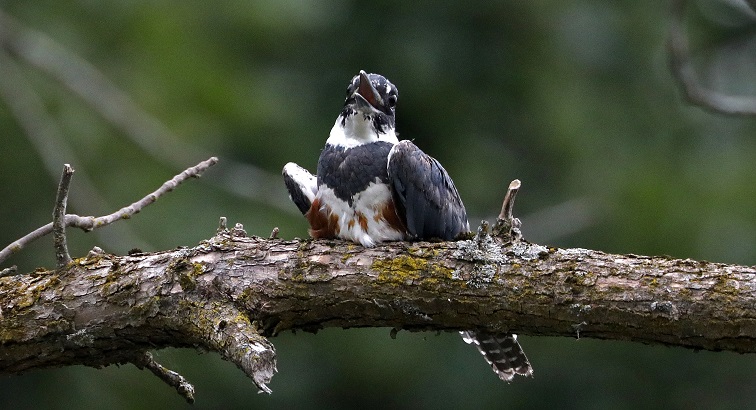 |
|
After a hard day's work in the 90 degree heat, this female Belted Kingfisher is taking a break. Birds will sometimes droop their wings to allow the breeze to cool under them, but the Kingfisher has some of the shortest legs of any bird, so she just flops them on the branch. And then she laughs. :) high-res
|
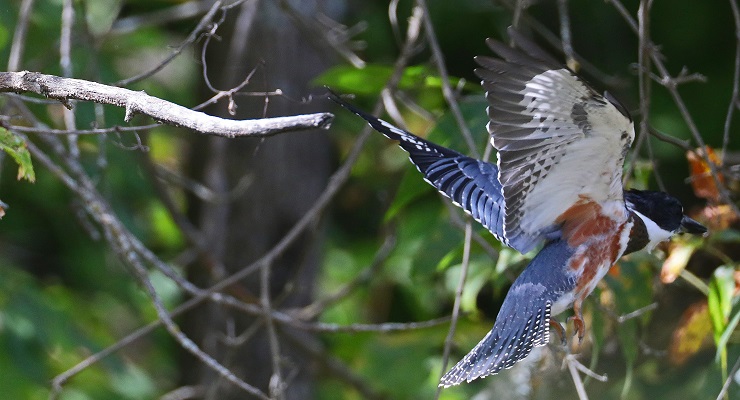 |
|
This wings-up flight shot shows the female's reddish chest band continues under the wings to large reddish spots. high-res
|
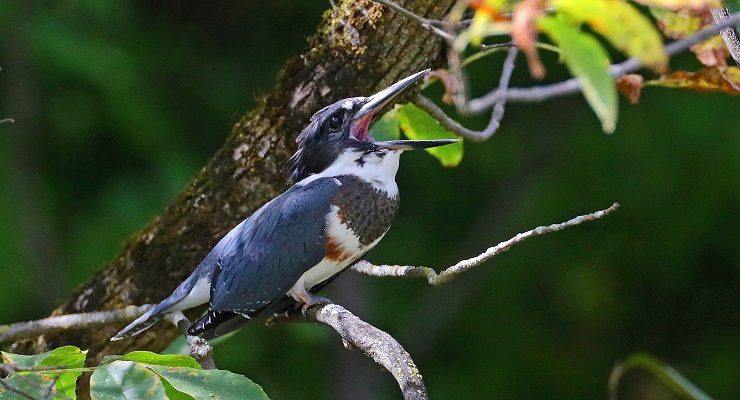 |
|
This female Belted Kingfisher has the biggest yawn I have seen in a long time. high-res
|
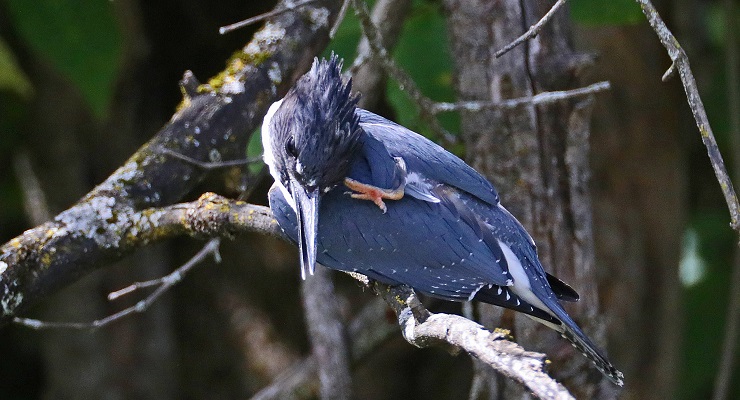 |
|
Belted Kingfishers catch their food with their extra-long beak, not the feet, so long legs are not needed, they have the shortest legs of any bird of this size. Here, she is scratching her chin, but she must reach from behind the wing, not over it. high-res |
Lighthouses - Canal Corp Boats - Tugboats & Trawlers